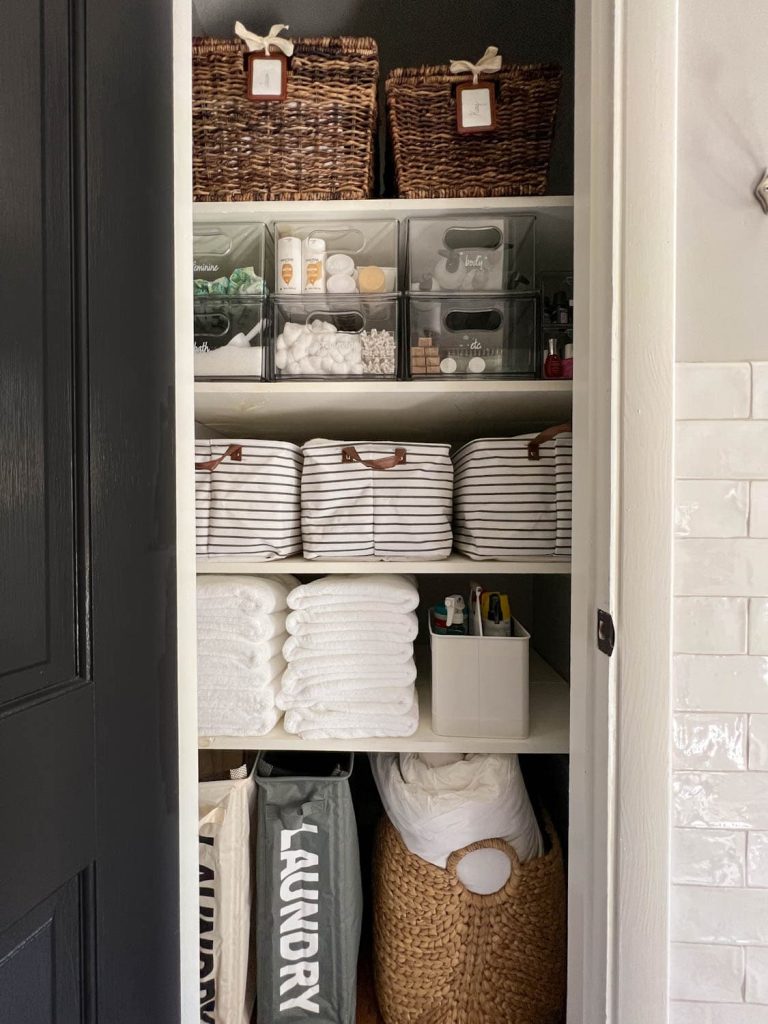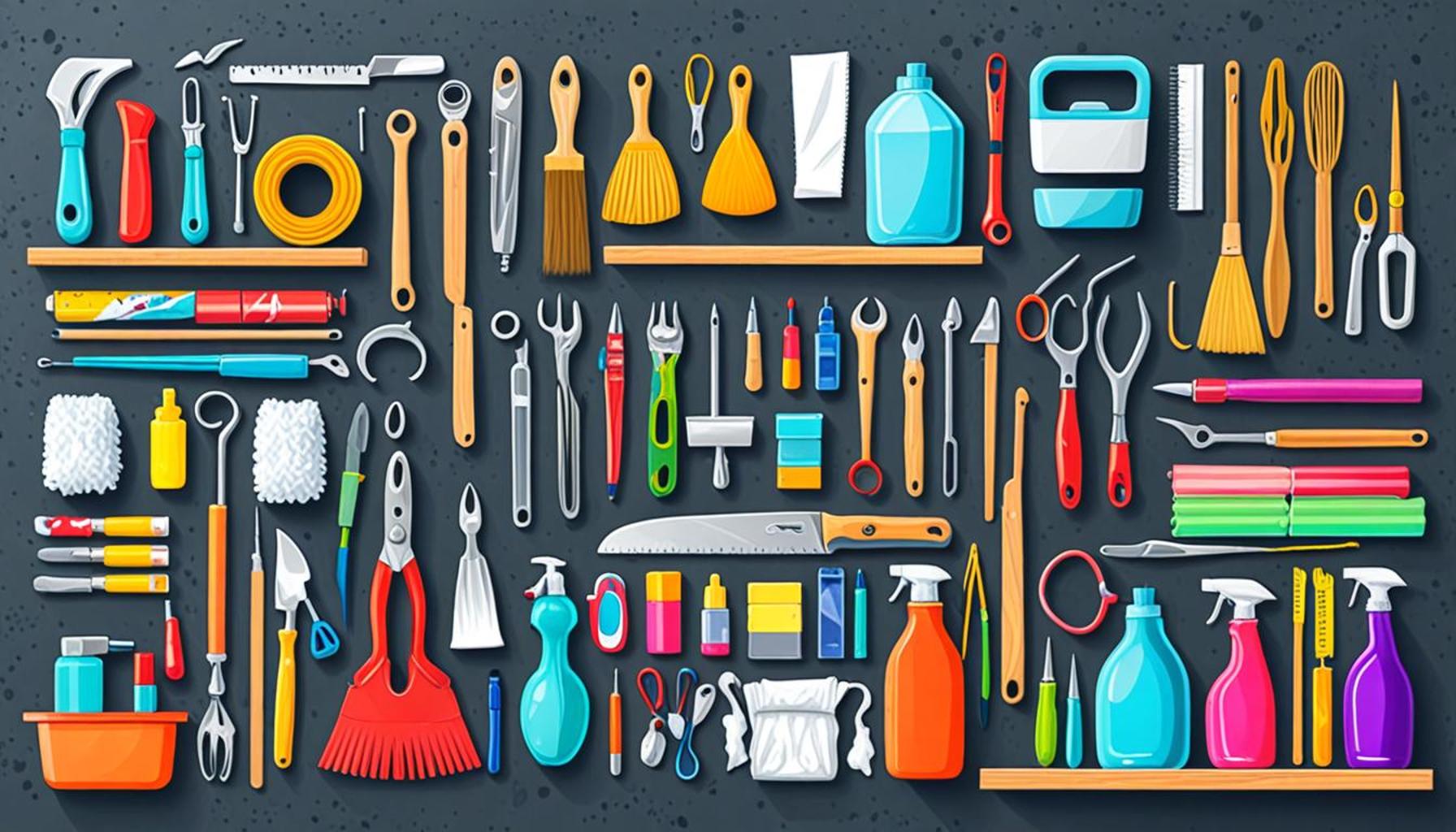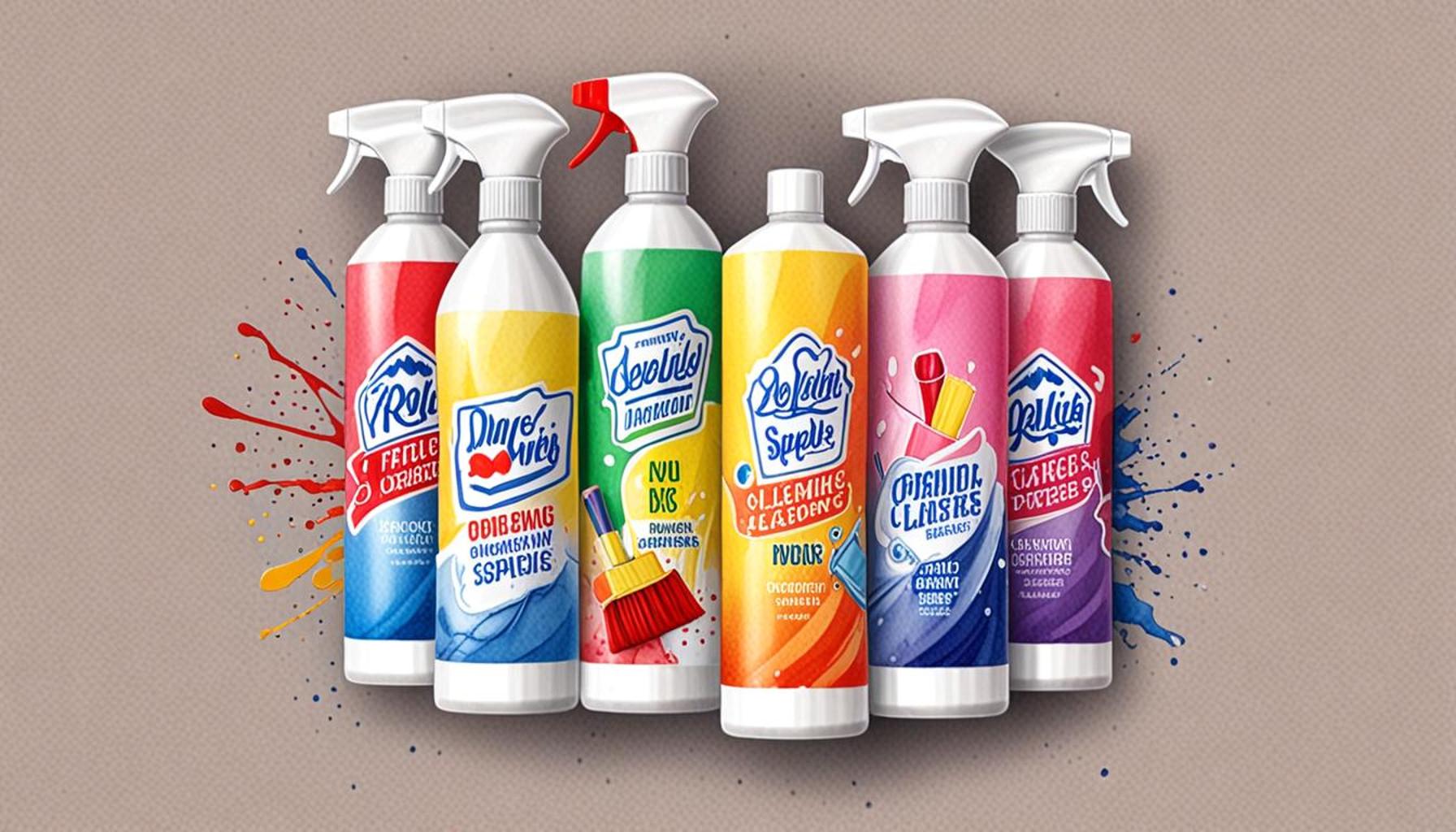Organization Tools for Deep Cleaning: How to Efficiently Approach Every Room in the House

Unlocking the Secrets of Efficient Deep Cleaning
Deep cleaning can feel like an overwhelming task, but with the right organization tools, you can transform this daunting chore into a manageable project. Instead of dreading the prospect of tackling every room, you’ll learn how to approach the process with a clear plan and effective tools. Understanding these strategies not only makes the task more accessible but it can also significantly improve the cleanliness and maintenance of your home.
Consider integrating some essential elements to streamline your deep cleaning efforts:
- Checklists: A room-by-room checklist helps you stay focused and ensures no detail is overlooked. For instance, you can create a separate checklist for the kitchen that includes cleaning the oven, refrigerator, and countertops. This method not only clarifies your tasks but also provides a sense of accomplishment as you check off completed items.
- Storage Solutions: Utilize bins, baskets, and caddies to store cleaning supplies efficiently. A mobile cleaning caddy can be particularly useful as it allows you to carry all your essentials—such as sponges, cloths, and various cleaning agents—throughout the home without needing to waste time gathering supplies from different locations.
- Labels: Label everything for easy access and maintain organization once your cleaning is complete. Consider using a label maker or simply writing on masking tape. For example, labeling bins with tabs such as “Bathroom Supplies” and “Kitchen Cleaners” will help ensure you always know where to find what you need.
Every room in your house requires different approaches and tools. Here are some examples:
- Kitchen: Use multi-surface cleaners for countertops and cabinets, and don’t forget to tackle appliances like the microwave and blender. Incorporating a vinegar solution can work wonders for tough stains and odors.
- Bathroom: Invest in scrub brushes and disinfecting sprays for maximum efficacy. Pay special attention to grout lines in tiles, as built-up mildew can be a recurrent issue. Moreover, a steam cleaner can be an effective tool for tackling stubborn soap scum.
- Living Areas: Incorporate dusters that reach high places and furniture polish for a polished finish. Don’t overlook less obvious areas like baseboards and window sills that tend to collect dust over time.
In this article, explore innovative ways to gather your supplies, the best products available, and time-saving strategies to ensure every corner of your home shines. For example, consider employing the “Two-Minute Rule” where if a task takes less than two minutes, tackle it immediately instead of letting it pile up. With these tools and tips, deep cleaning can become less of a chore and more of an accessible task to conquer. You may uncover a new level of satisfaction in restoring your living space to its freshest and cleanest state.
DISCOVER MORE: Click here to learn about the significance of eco-friendly certifications

Essential Strategies for Every Room
Having the right organization tools for deep cleaning can drastically change the way you approach this necessary household chore. Each room in your home has its own set of challenges, but with a structured plan and the proper supplies, you can tackle each area efficiently and effectively. Understanding the specific needs of each room allows you to deploy tailored cleaning strategies that maximize your time and effort.
To make the most out of your deep cleaning routine, consider the following segmented approach:
1. The Kitchen: A Culinary Sanctuary
The kitchen is often considered the heart of the home, and it certainly demands attention when it comes to deep cleaning. Start with a room-specific checklist. Key tasks should include:
- Wiping down cabinetry.
- Cleaning out the refrigerator, discarding expired items.
- Scrubbing the oven and stovetop.
- Sanitizing countertops to remove bacteria.
By applying baking soda or a vinegar solution, you can tackle tough stains and lingering odors. Additionally, store all your cleaning supplies in a mobile caddy, so that you can easily access them while you clean. This saves time and maximizes efficiency.
2. The Bathroom: A Hygiene Haven
Next on the list is the bathroom, a space that requires rigorous sanitization due to its moisture-rich environment. Equip yourself with appropriate tools like:
- Brushes specifically designed for scrubbing tiles and grout.
- Disinfecting wipes or sprays for surfaces.
- A steam cleaner to eliminate stubborn soap scum.
Pay special attention to high-touch areas, such as faucets and light switches, as they are breeding grounds for germs. Label your storage bins under the sink to easily find items like toilet cleaner and air fresheners. This will streamline your process greatly.
3. Living Areas: Creating Comfortable Spaces
Moving to the living areas, the key focus here is dusting and organizing. Use extendable dusters to reach high shelves and ceiling fans, which tend to accumulate dust over time. Don’t forget:
- Cleaning baseboards.
- Wiping down electronic devices with microfiber cloths.
- Vacuuming upholstery and under furniture.
Using a combination of furniture polish and a dust-catching cloth will leave surfaces looking polished and vibrant. With the right organization, you can create a cleaning kit for all living area needs that includes both cleaning solutions and dusting tools. This ensures that everything is readily available when it’s time to tackle these tasks.
In summary, every room requires different attention and tools, and approaching deep cleaning with a clear strategy can make all the difference. By using these organization tools and customized approaches, you can maintain a welcoming, sanitary environment while reducing the stress associated with deep cleaning. Each room can once again shine, reflecting a well-organized home where cleanliness is a priority.
Understanding Deep Cleaning Strategies
Deep cleaning involves a comprehensive approach, emphasizing not just tidiness but also sanitation. To maximize your efforts, employing organization tools for deep cleaning is essential. These tools help outline a systematic method for tackling each room efficiently. Here’s how you can effectively use them:
1. Room-by-Room Approach
When it comes to deep cleaning, think of your house as a collection of individual rooms, each requiring its own tailored strategy. Begin with determining the unique needs of each space. For instance, kitchens often require specific tools for tackling grease and grime, while bathrooms may benefit from specialized cleaning solutions for tiles and fixtures.
2. The Power of Preparation
Preparation is key to an efficient deep cleaning process. Gather all necessary supplies beforehand, such as cleaning agents, scrub brushes, microfiber cloths, and storage bins. Incorporating organization tools like caddies and baskets can help streamline your cleaning process, making it easier to transport supplies from room to room.
3. Utilizing Checklists
Creating a detailed checklist for each room can keep you organized and focused. Outline all tasks that need to be completed, from dusting high shelves to mopping floors. This helps ensure nothing is overlooked during the deep cleaning process.
4. Implementing Time Management Techniques
Setting time limits for each room not only helps maintain a good pace but also prevents you from feeling overwhelmed. Consider using timers or apps to remind you when it’s time to move on to the next task. This can be particularly helpful when working in larger spaces, where it’s easy to lose track of time while focusing on small details.
5. Enlisting Help
Deep cleaning can be a hefty task, and sometimes it’s best tackled as a team. Enlist family members or friends to make the job lighter and more enjoyable. Organize cleaning tasks based on strengths—if someone excels at organizing, let them take care of decluttering, while others can focus on deep scrubbing surfaces.
Conclusion
By implementing these strategies with the right organization tools for deep cleaning, you can create an efficient plan tailored to each room in your house, transforming the routine chore into a manageable and effective process. Keep exploring efficient, room-specific strategies that will not only enhance your cleaning routine but also create a healthier living environment.
| Category | Advantages |
|---|---|
| Room-by-Room Organization | Targets specific needs and priorities of each area. |
| Preparation Tools | Helps streamline cleaning process with efficiency. |
| Checklists | Ensures all tasks are completed without missing essential areas. |
| Time Management | Keeps pace and prevents overwhelm during cleaning. |
| Team Cleaning | Makes the process quicker and more enjoyable with shared efforts. |
DISCOVER MORE: Click here to learn how to optimize your cleaning process
Practical Tools and Techniques for Every Space
As you move from room to room, having the right organization tools not only increases efficiency but also enhances the effectiveness of your cleaning routine. Different rooms come with unique requirements and challenges, so it’s vital to be equipped with the tools and techniques that cater specifically to those needs. Here, we explore effective strategies for bedrooms, home offices, and laundry rooms.
1. Bedrooms: A Sanctuary for Rest
Bedrooms are personal spaces that should promote relaxation and comfort, yet they can quickly become cluttered and dusty. To efficiently manage deep cleaning in this area, focus on de-cluttering before you begin. Consider using clear storage bins or under-bed storage containers to keep belongings organized. Key tasks in the bedroom should include:
- Changing linens and laundering bedding.
- Dusting surfaces, including furniture and décor.
- Vacuuming carpets and rugs, ensuring to get under the bed.
For a thorough clean, use a vacuum with a HEPA filter to capture allergens. Multi-surface wipes can simplify dusting, allowing you to tackle surfaces quickly. Organizing closets using dividers or shelves can also contribute to a more spacious and tidy environment, making it easier to maintain cleanliness over time.
2. Home Office: A Hub of Productivity
In today’s world, keeping your home office clean and organized is essential for sustained productivity. A clutter-free workspace inspires focus, while disarray can lead to distractions. Start by gathering essential office organization tools, such as:
- Drawer organizers for pens and stationery.
- Labeling machines to identify files and folders.
- Storage boxes to keep documents compact.
Deep clean your workspace by wiping down electronics, including monitors and keyboards, with appropriate cleaning solutions. Organizing digital files on your computer can also enhance your productivity. Make use of cloud storage or external drives to keep your digital life clutter-free. Additionally, setting a regular cleaning schedule will help maintain organization and allow for a fresh start each week.
3. Laundry Room: The Overlooked Workhorse
The laundry room often becomes a catch-all space, accumulating items that don’t seem to have a home elsewhere. To optimize the deep cleaning process here, employ functional organization tools like:
- Wall-mounted shelves or cabinets for storing detergents and supplies.
- Hampers with compartments for sorting colors and fabrics.
- Vacuum storage bags for infrequently used items.
During your cleaning session, take time to wipe down surfaces and clean the washing machines and dryer vents, helping prevent lint build-up and ensuring safety. Empty and clean the lint trap regularly to enhance dryer efficiency. Organizing your laundry supplies in a mobile cart can allow easy access while making the cleaning process much smoother and faster.
Incorporating these organization tools and tailored techniques not only streamlines the deep cleaning process but also creates functional spaces that foster well-being in your home. By treating each room with the attention it deserves, you’re investing time in creating a harmonious living environment that reflects cleanliness and order throughout your home.
DON’T MISS: Click here for your ultimate daily cleaning checklist!
Conclusion: Elevate Your Cleaning Experience
In the quest for a pristine home, the role of effective organization tools in deep cleaning cannot be overstated. By employing tailored tools and techniques specific to each room—whether it’s maximizing storage in the bedroom, enhancing productivity in the home office, or maintaining order in the laundry room—you create a structured environment that makes cleaning tasks less daunting. A strategic approach not only simplifies the process but also reduces the overall time spent on cleaning.
Consider the cumulative impact of these organization solutions: a clutter-free bedroom fosters better rest, an orderly home office boosts productivity, and a clean laundry space ensures your appliances function efficiently. By adopting habits such as regular decluttering and setting cleaning schedules, you enhance the longevity of your efforts, turning deep cleaning from a chore into a manageable routine.
As you embrace these techniques and tools, remember that a clean home is a reflection of a peaceful mind. Each component, from the labels on your storage bins to the filters in your vacuum cleaner, plays a vital role in achieving a harmonious living space. Delve deeper into this journey of cleanliness by exploring new organizational products and innovative cleaning methods that suit your lifestyle. Ultimately, the time invested in organization yields rewards that extend beyond mere cleanliness, nurturing a balanced and inviting home for you and your loved ones.


